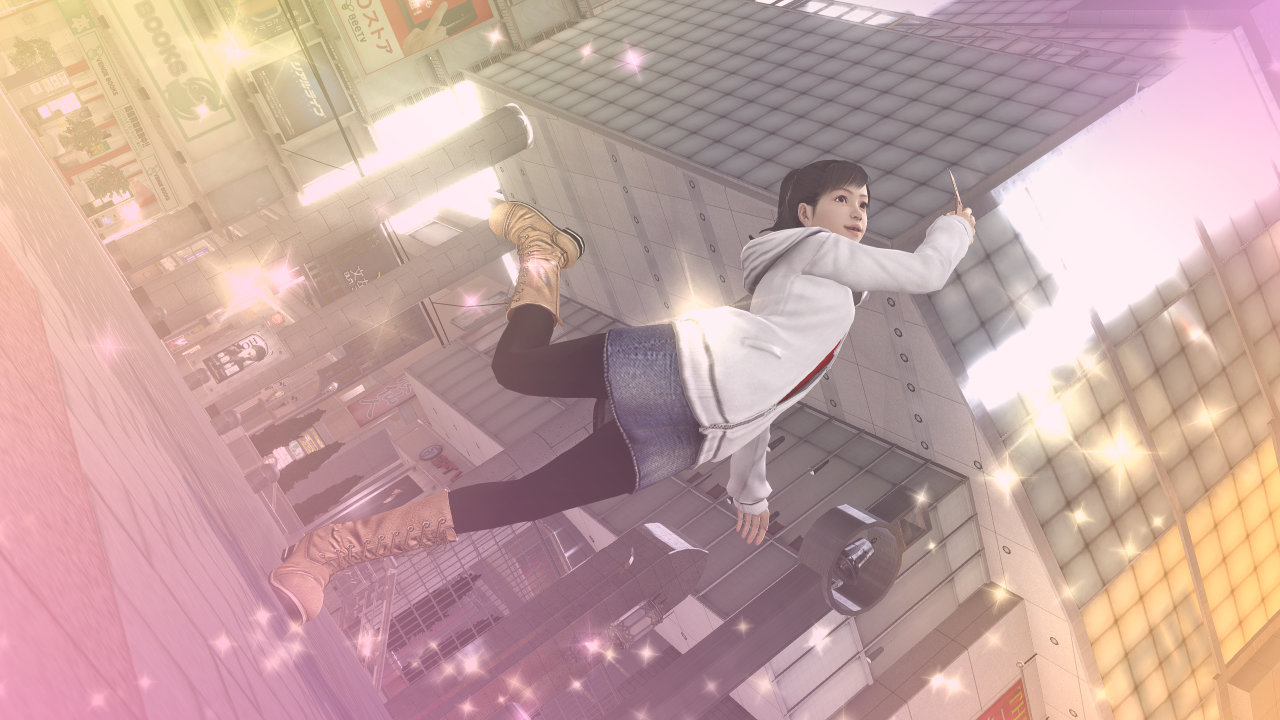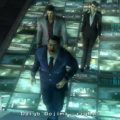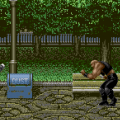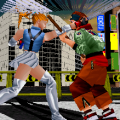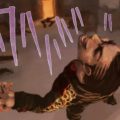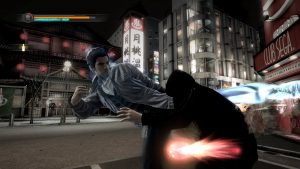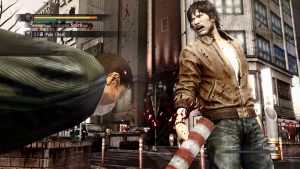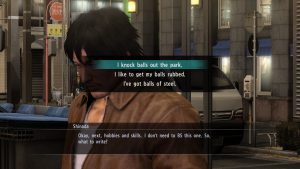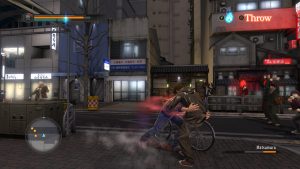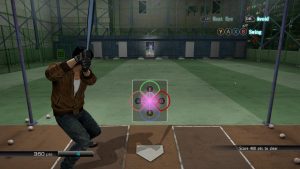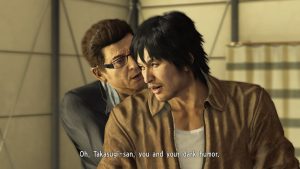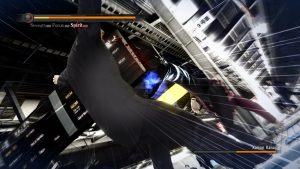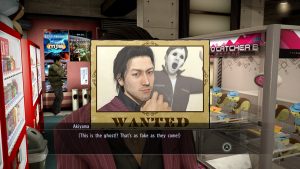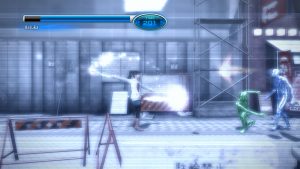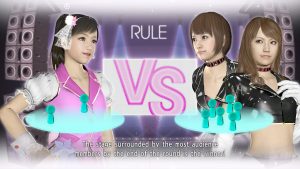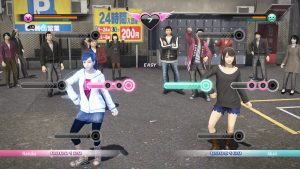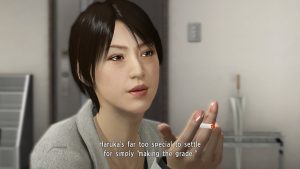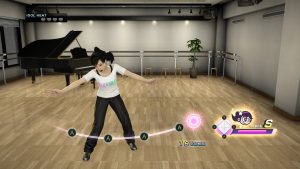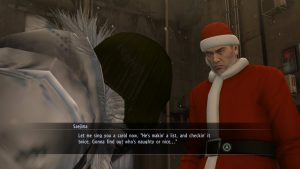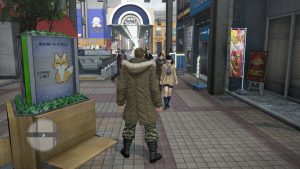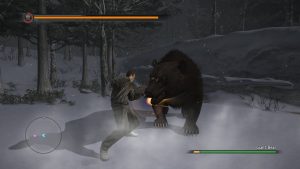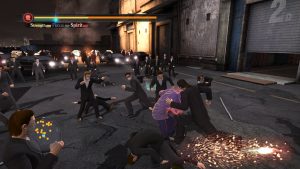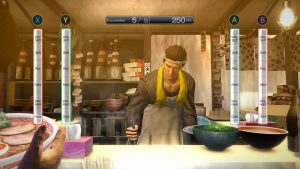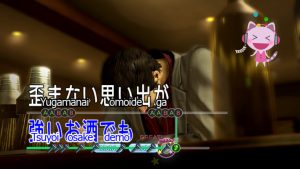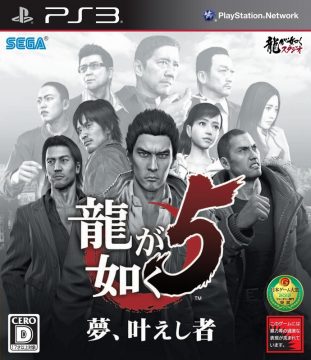
After finding their footing with Yakuza 4 and trying something different with Dead Souls, the Like A Dragon developers were renamed to Ryu Ga Gotoku Studio, and proceeded to release the then biggest entry of the series – and it is still at least in the top five on that front, if not top three. Yakuza 5 is gargantuan, with countless things to do, quality stories on the side, a fleshed out combat system, and a total of five characters to control through the adventure. It is also one of the most uneven experiences the studio ever put out, an endurance test of a game that will make completionists sweat like never before.
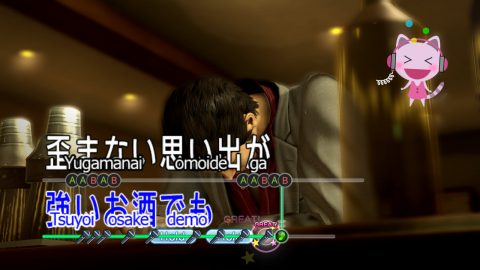
It was also important, as we only got this entry in western territories due to fans begging Sony for a translation after Sega seemingly gave up on the series after Dead Souls‘ poor performance, which eventually lead to them giving one more shot with Yakuza 0 and effectively turning the franchise into a juggernaut. Like Yakuza 3 and 4, we have a remastered version to enjoy, bumping up the frame rate and giving us a new localization, and it is worth a visit. Just know that you’re in this entry for the long haul.
Our story follows three of the four Yakuza 4 protagonists, alongside Haruka entering playable status as an up and coming idol, and a former baseball player turned brothel reviewer named Tatsuo Shinada. Things start with Kiryu working as a taxi driver in another city, as part of an agreement to disappear with Haruka’s agency, only to once again get wrapped up into yakuza nonsense as Daigo disappears while on a business trip. Saejima has to escape from prison (again) after getting some surprising news, while Haruka and Akiyama find each other in Sotenbori on their own career paths as both find themselves dealing with the local Omi. As for Shinada, he ends up uncovering a big secret in his neighborhood after a masked man hires him to look into what really happened the day his baseball career ended. A criminal conspiracy is at the heart of all their stories, and threatens their collective dreams as everything ends up converging in Kamurocho.
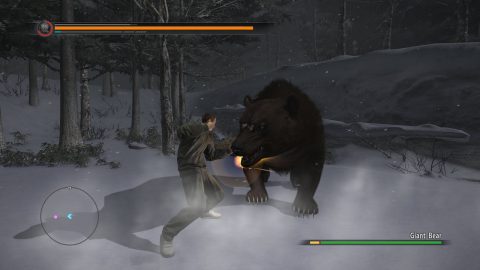
That is about as simple as the story can be described without instantly devolving into confused explanations (and that’s not even getting into the wild stuff they do with Majima in particular). Yakuza 5‘s biggest issue in its narrative is that they clearly had ideas for each unique character scenario, but struggled to try and justify a main plot that connects them together in a satisfying way. There are major names in the story that have a tenuous connection to the core threat at best, and with a game with dozens upon dozens of named characters, this starts to become a problem. The actual plan of the main antagonists makes sense once its revealed, but the ridiculous amount of hoops they had to jump through seems extremely unnecessary, trying to cram that conspiracy into every story and just barely managing it. Honestly, only Kiryu’s part feels all that important in the grand scheme, while other parts feel poorly placed into the larger story, Saejima being the biggest offender.
The actual quality of those character specific stories is also all over the map. Kiryu and Shinada are the clear winners, Kiryu giving a strong start as we see him alone and festering with frustration, while also enjoying a new life (and feeling guilty about it) with the best boss he’s ever had. Shinada’s part before the finale also does a great job of exploring the main theme of dreams, doing a fantastic job with lively cutscene direction to paint the dorky horndog as a lovable loser you can’t help but root for as everything goes well over his head. The middle segments, however, have significant problems, especially Saejima’s. The caged tiger’s rough edges have been sanded off, leaving a fairly flat Kiryu clone for a lot of his runtime. It doesn’t help that his focus is building a friendship with Baba, one of the most obnoxious and pathetic characters in the franchise, starting as a sickening helpless toddler man, and somehow made worse after a major revelation that should have made him interesting.
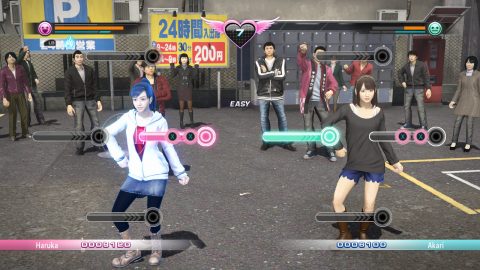
Haruka and Akiyama share part three to confused results, starting strong with showing the flip side of Haruka’s and Kiryu’s absence from the orphanage. There’s some good idol drama and an interesting relationship built with Haruka’s manager Park, a messy but complicated and compelling character, but Akiyama’s arrival at the halfway point of said part ends up being surprisingly middling. He does have a significant connection to what’s happening as Park’s bankroller, but Akiyama’s emotional connection to the plot is barely there and leaves him with without an arc or interesting angle. Heck, a single substory dealing with his former coworker from the bank he was fired from has more for his character than any part of the core narrative. As a result, he mostly sticks around doing a slightly less fun version of his detective deal from 4, and going on asides about the power of dreams to the point of annoyance.
Theme has to tie everything together, but unlike other game where there’s usually a few core ideas to work with, Yakuza 5 only has one: Dreams, or as commonly said in the Japanese dialog, “yume.” You will get very tired of hearing characters say “yume” after awhile. The theme is about as subtle as a sledgehammer to the face, with countless speeches from many characters (ESPECIALLY Akiyama), but it is well used in most every scenario, especially as Shinada’s brings it home for the finale. Even the villains end up matching along with the theme with their own dreams, exploring the bitter sweet nature of our dreams and how they affect us. The game is blunt, but it does manage to tell an effective story exploring that core idea at multiple angles.
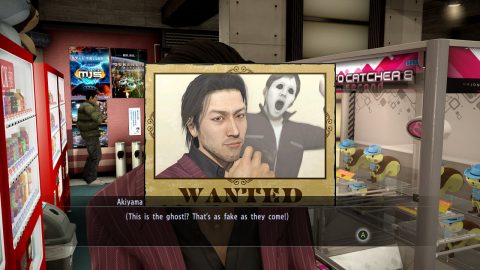
This entry has a significant engine update, so Kiryu, Akiyama, and Saejima all control as you remember, but with some slight modifications. For example, Akiyama can’t build heat like a madman by juggling enemies with wall bounces after they’re KO’ed anymore, but he can hit enemies on the ground easier, as can everyone else, which is useful. The one big addition is climax heat, a red heat bar that build up both to a big powerful special heat move, and helps fuel special moves for each character, requiring you to be in normal heat mode first.
Those moves aren’t terribly impressive. Kiryu gets a thematically fitting but overall messy rage state, which can dash him around instantly to enemies to wildly pound into them, but with very little control otherwise. Saejima can throw people around like ragdolls for extra crowd control, which isn’t that huge a deal since he already has a lot of options for crowd control. The animation also takes time to get going, so it’s not terribly enticing. Akiyama gets a launcher into air juggling, that would have been great, but the awkward button placement via heavy attack makes it tricky to have it come out when you want, since you can’t be 100% sure if you’ll get a basic heavy attack or a launcher you have to quickly follow up to use properly at any given press.
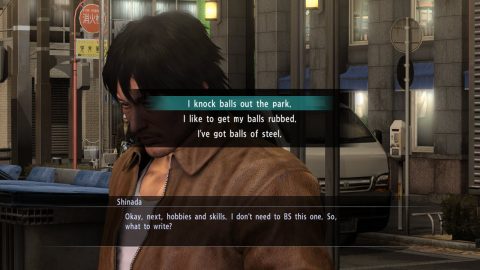
Shinada is a unique take on the turtle concept Tanimura had, switching out the parry for a focus on awkward combos and grappling. He can keep up with the rest of the gang damage wise, but it takes him longer to do so bare-handed. Though, he does get the one fully useful special move in his My Meteor Tackle, allowing him to smack into an enemy’s gut that leads to a good few options for grabs, throws, or just knocking them into a wall or such to keep them down for a bit. His awkward rush combo means that knocking enemies to the floor is important so he doesn’t get overwhelmed doing his thing. He also gets some bonuses to his initial weapon levels, and unique weapon attacks and abilities, though he is unable to use a bat because he respects baseball just that much.
Weapon levels were an experiment for this entry that you won’t really see repeated in the future, which isn’t surprising due to how poorly it was thought out here. The idea is every character as levels for each weapon type from one to ten, and using a weapon in that category will slowly gather experience and raise the level, giving passive bonuses like extra damage, durability, or discounts on repair. Where you run into a problem is that higher end weapons, the kind you’d normally save for boss cheesing, are now locked behind those levels. If you don’t have enough level in a given weapon type, you won’t be able to wield the good stuff – which is a shocking revelation in Kiryu’s story, with how long it takes for the weapon shop to open for him, leaving him only enemy drops for weapon pick ups, which you’ll probably ignore due to those weapons often being kind of trash. The end result is just more padding, yet another thing to deal with on the checklist, but with very little to show for it.
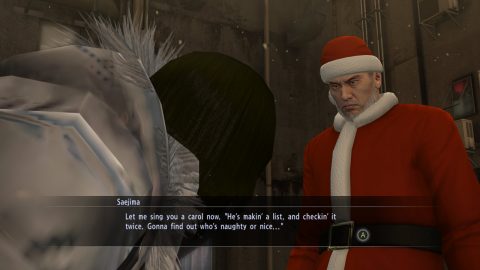
Things get unique with Haruka, and it mostly works. Since she’s competing in an idol competition, her gameplay is based around performance. The core is a simple rhythm game for idol performances, used mainly for her concert battles in the story and for adding to her side story jobs. She also gets a dance battle minigame, which is a tad more complex with the addition of heat moves and the need to switch your cursor position instead of just do the input at the right time. Doing these acts, and doing side jobs in her side story, also raises her idol stats alongside her base leveling, which help her score points in her concert performances. It all melds quite well into a satisfying loop, as do side stories do for most everyone else. Climax heat also enters her gameplay for the story concert boss battles, which allows her to transform her outfit into a flashier affair partway through her performance. It’s a fun way to give more pizzazz to these beats.
Kiryu’s taxi stuff is well mixed into his story, giving a change of pace by giving challenges where you have to drive safely. There’s also races, with annoying rubber band AI, but with a very good story relating to his taxi company coworkers and some genuinely unexpected revelations. Saejima’s hunting story is also addictive in its back and forth loop as you go to the mountain to try and nab game, using a solid mixture of arcade elements and hunting sim ideas to make an approachable but engrossing experience. The story is also strong, but is so out of place in his overall story that it might give you whiplash.
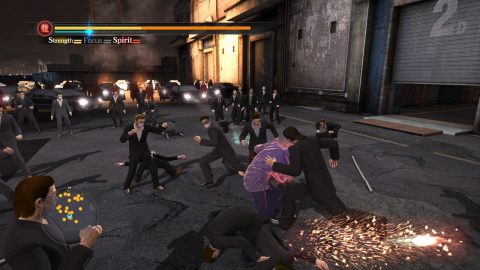
As for Shinada, he gets challenges from past rivals to bat their pitches. His batting minigame is completely revamped as a result, initially intimidating, but gives you far more control in practice. He even gets his own unique batting stats, as Haruka does for her idol skills. Kiryu and Saejima will also be able to get upgrades for their taxi and hunting gear, respectfully. Akiyama is left out in the cold, and the lack of that side story might explain while he’ll be lower level than anyone else when even doing as much side stuff as you can.
This is a lot, as you can tell, and leads to a very meaty runtime – and we’re still not done! Everyone gets unique minigames as well, like Kiryu’s noodle soaking game, or Shinada’s chicken races. That latter one is also a huge time sink in itself, in case you needed yet another thing to eat up all your time. Each of the four parts also has its own map, with Kamurocho saved for the finale, Akiyama and Haruka also bringing back Sotenbori from 2. Kiryu has Nagasugai, based on Nakasu in Fukuoka, a river set area with interesting road layouts. Saejima eventually gets to Tsukimino, based on Susukino in Sapporo, which is populated with indoor mall halls and an ice sculpture display on top for a snow festival. Shinada gets Kin’eicho, based on Sakae in Nagoya, a cozy area with a lovely outdoor park with a large tower.
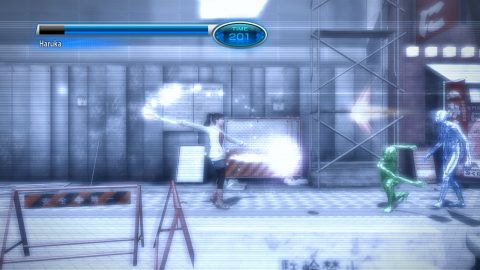
The reason for the inclusion of so many parts of Japan is because this entry was conceptualized partly as a way to show off the country – it is in no small part a tourism ad, complete with cameos of company representatives and celebrities. Heck, a master everyone shares is an actual TV chef named Tatsuya, who can give you a mess of food related buffs and a second health bar if you show him fine eateries in the area. That sounds interesting in concept, but that idea often feels half baked or even intrusive, as the game stops so you can listen to an empty sales pitch coming out of the mouth of an actual CEO. This is where the ads occasionally start to get very obvious and a tad obnoxious, though they thankfully slow down on this come Yakuza: Like A Dragon.
Presentation is a good few notches up this go, with the engine change giving nicer texture work and some cinematic flair and voice acting at unexpected points. There’s even letter boxing effects when entering some dialog, making it feel more unique. The soundtrack is a bit more hit and miss, switching is a techno heavy sound that might not be as catchy as some previous adventures. We do get some major boss theme bangers out of this, though, the two big highlights being Kiryu’s story ending theme The Place Where I Used to Be, and the final boss theme Battle for the Dream. Karaoke also brings some all time greats with Rouge of Love and Baka Mitai, the later of which has become an overall franchise theme. Haruka also gets some great tracks for her idol games, her main song of So Much More being an ear worm you will struggle to forget.
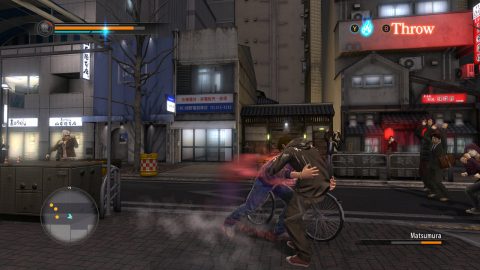
There’s just so much more to talk about! We haven’t even talked about masters and their attached stories, the mix of comedic and melancholic substories, revelations now expanding to “weapon revelations,” new collectibles, the beginning of actual games in arcades like Taiko no Tatsujin, simplifications made to weapon modding, the Victory Road fighting tourney, the non-canon vacation scenario in Premium Adventure, Shinada’s mom letting him have two masters, the revamp to the IF boss fight simulator becoming a janky beat-em-up, the janky snowball tactical FPS, or even the air hockey minigame that all characters, including Haruka, can play, thus implying Haruka is bisexual because she builds heat from staring at the boobs of her opponent just like the guys – there’s just so much to talk about, and that’s still not everything!
Yakuza 5 is absurdly large. You need to pace yourself, or it will overwhelm you, partly due to the awkward pacing of the chapters due to having to put in introductions to all this stuff alongside main story beats. This is RGG Studio flexing on just how much they have mastered the PS3 hardware, just how much they can give the player to do, and it is both awe inspiring and very tiring, even just doing the main story line ending up with you feeling tired due to how long it goes on compared to previous entries. It’s all over the place quality wise, with dips, hills, and valleys over every hour of play, but it does feel rewarding for what it nails.
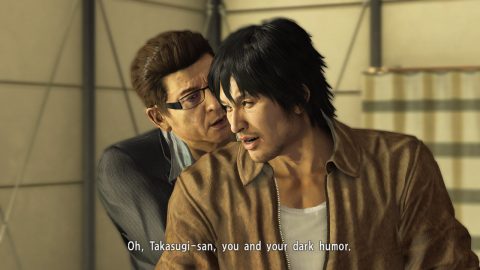
It also ends on a cliffhanger that took four years to resolve, though we would get two more games between then – the first being their first try at the PS4, and a return to the age of the samurai, though on its tail end as Japan was forced onto the world stage.
